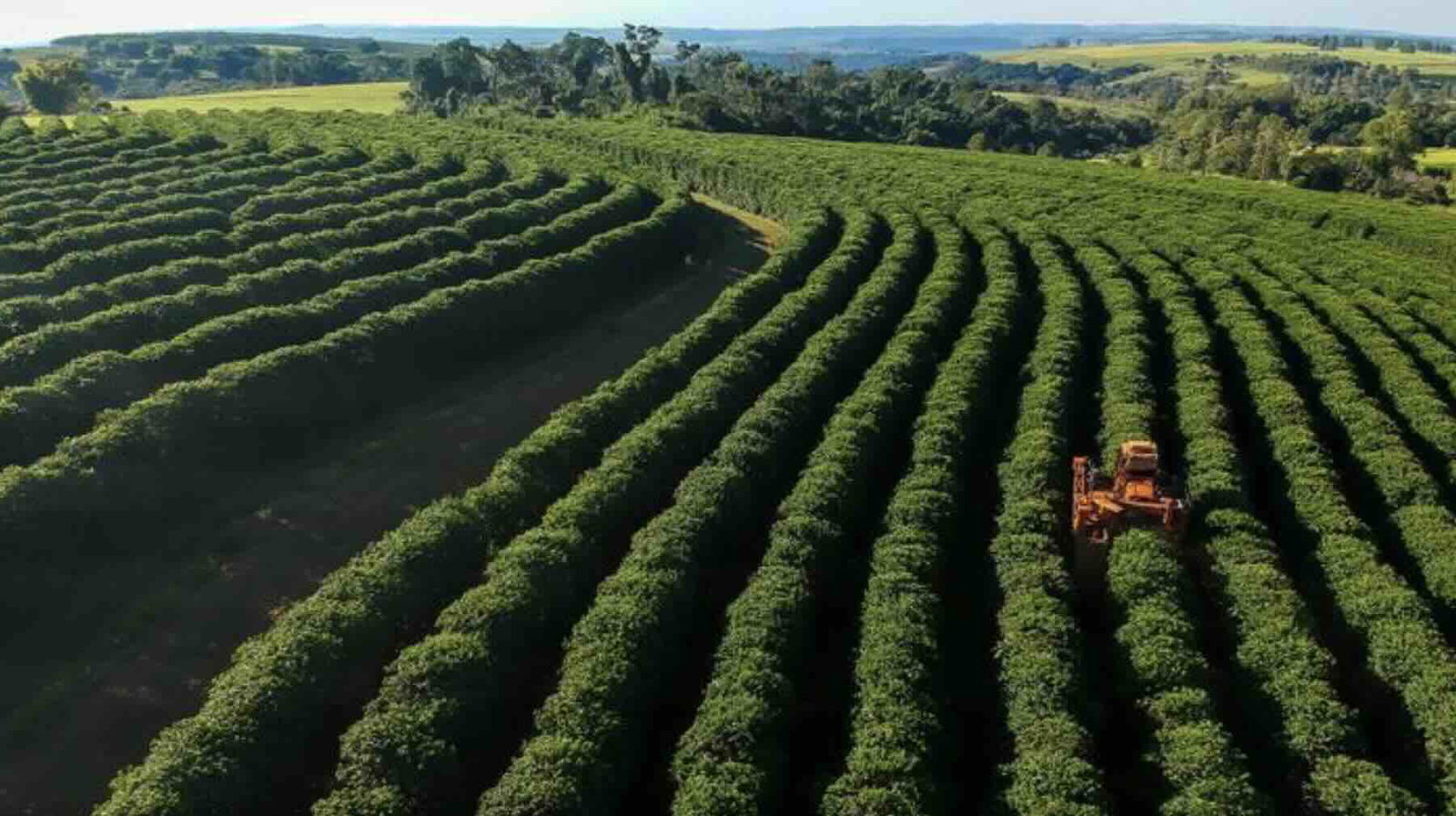For generations, some of the world’s favorite indulgences—coffee, chocolate, and wine—have depended on remarkably fragile climates. However, as global temperatures climb and rainfall patterns shift, these luxury crops are becoming increasingly difficult to grow.
Now, a new study suggests that even futuristic climate intervention technologies may not be enough to save them.
In research published in Environmental Research Letters, scientists at Colorado State University modeled how stratospheric aerosol injection (SAI)—a proposed form of solar geoengineering—might affect conditions in key growing regions across Europe, South America, and West Africa.
The results show that while the intervention could cool global temperatures, it failed to consistently preserve the delicate balance of temperature, rainfall, and humidity these luxury crops depend on.
“Reducing temperature with SAI alone isn’t enough,” co-author and atmospheric scientist at Colorado State University, Dr. Ariel Morrison, said in a press release. “For instance, cacao species, while more tolerant of hot temperatures than coffee and grapes, are highly susceptible to pests and diseases caused by a combination of high temperatures, rainfall, and humidity.”
“Natural climate variability also cannot be ignored—it leads to a wide range of outcomes under the same SAI scenario that could affect the livelihoods of farmers growing cacao, coffee, and grapes.”
The research focused on three economically vital “luxury crops”—wine grapes, coffee, and cacao. These natural commodities not only support millions of farmers but also underpin global industries worth tens of billions of dollars.
And while these plants thrive in tightly defined environmental conditions, the accelerating pace of climate change is rapidly pushing those conditions out of reach.
“Luxury crops such as grapes, coffee, and cacao have immense economic and cultural importance in many regions,” the researchers write. “Natural climate variability may exacerbate the impact of increasing temperature and shifting precipitation patterns, leading to large interannual variations in yields, potentially resulting in revenue loss.”
Stratospheric aerosol injection, or “SAI,” is a concept inspired by volcanic eruptions that temporarily cool the planet by reflecting sunlight back into space. In principle, fleets of aircraft or high-altitude balloons would release fine sulfur aerosols into the stratosphere to lower global temperatures. However, as this new study shows, what might stabilize the planet’s average temperature doesn’t necessarily translate into stable conditions for agriculture.
Using climate simulations from 2036 to 2045, researchers analyzed how SAI might impact 18 major growing regions. They tested two temperature-targeted SAI scenarios—keeping global temperatures at 1.0°C and 1.5°C above pre-industrial levels. They then compared them to a control scenario without SAI.
The model examined daily and monthly data for temperature, precipitation, and humidity, along with detailed “agroclimatic indices” that determine whether a given year’s growing conditions were suitable for each crop.
The findings were complex and often counterintuitive. While geoengineering successfully lowered surface temperatures, it did not guarantee stable or favorable growing conditions.
For example, in Western Europe, wine grapes benefited in some lower-latitude regions, such as southern Spain, where cooler temperatures helped meet key indices for dormancy and ripening. However, elsewhere, the benefits disappeared.
In South America, coffee production under SAI was marked by unpredictable outcomes. Some simulations showed improvement from increased rainfall, while others showed devastating losses due to frost events.
The same volatility appeared in West Africa’s cacao regions, where cooler temperatures occasionally reduced disease risks—but only inconsistently. In fact, the study found that only six out of the 18 regions studied experienced reliable improvement under SAI compared to scenarios without it.
“Even after multiple decades of SAI deployment, revenue differences are only uniformly positive or negative in eight of the 18 regions,” researchers noted. “Few places are likely to experience uniformly beneficial or detrimental luxury crop growing conditions after SAI deployment.”
In addition to the agricultural impact, the study also calculated potential economic consequences. By linking crop suitability to historical export data from 18 countries, the researchers estimated how changing growing conditions could affect export revenues between 2036 and 2045.
The results underscored the global stakes. In France alone, the difference between the best and worst SAI scenarios represented nearly $60 billion USD in potential wine revenue. Brazil’s coffee exports and Ghana’s cacao markets showed similarly volatile swings.
While SAI could theoretically provide temporary relief from heat stress, it would also introduce new uncertainty into global agricultural economies that already operate on thin margins.
These findings mark the latest blow to the once-promising notion that stratospheric aerosol injection could offer a controllable safeguard against global warming.
In recent years, skepticism surrounding the approach has deepened, particularly following another major study, covered by The Debrief, that warned of large-scale aerosol injections triggering unpredictable and potentially disastrous side effects.
That research, published in Scientific Reports, found that efforts to artificially cool the planet could destabilize regional weather systems, disrupt monsoons, and create uneven cooling patterns that might worsen climate problems rather than reduce them.
Taken together, the growing body of evidence suggests that even if geoengineering could lower average global temperatures, the cascading impacts on rainfall, humidity, and ecosystems could prove far more complex and far riskier than was once hoped. What began as a theoretical “planetary thermostat” increasingly appears to be an experiment with too many variables and too few guarantees.
Perhaps the most significant takeaway from recent research is a philosophical dilemma that even advanced geoengineering can’t outsmart the chaotic nature of the Earth’s climate. The authors stress that “internal variability”—the random fluctuations in temperature and rainfall from year to year—can overwhelm even the most well-designed geoengineering efforts.
“To first order, our results demonstrate that SAI may not be reliably beneficial for growing luxury crops in the future, despite reducing mean temperature and the risk of extreme heat events,” researchers conclude. “Luxury crops are highly sensitive to shifts in precipitation and humidity, not just temperature.”
In other words, even if humanity could dial down the planet’s thermostat, the regional consequences might still be erratic—and for farmers, unpredictability can be more damaging than gradual change.
The study highlights the limitations of geoengineering and emphasizes the importance of prioritizing adaptation over illusion. From France’s vineyards to Brazil’s coffee plantations and Ghana’s cacao farms, the future of our favorite comforts may ultimately hinge on helping farmers endure an increasingly unpredictable planet.
Ultimately, SAI remains a speculative concept rather than an actionable policy. This recent study arrives amid growing debate over whether humanity should prepare to deploy climate interventions if mitigation efforts fail. However, Dr. Morrison cautions against seeing such approaches as silver bullets.
“SAI climate intervention may offer temporary relief from rising temperatures in some regions, but it is not a guaranteed fix for the challenges facing luxury crop farming,” she said. “Adaptation strategies tailored to local conditions, investment in resilient agricultural practices, and global cooperation are essential to saving these crops and the communities that depend on them.”
Tim McMillan is a retired law enforcement executive, investigative reporter and co-founder of The Debrief. His writing typically focuses on defense, national security, the Intelligence Community and topics related to psychology. You can follow Tim on Twitter: @LtTimMcMillan. Tim can be reached by email: tim@thedebrief.org or through encrypted email: LtTimMcMillan@protonmail.com

